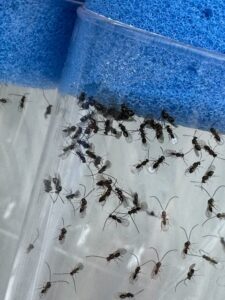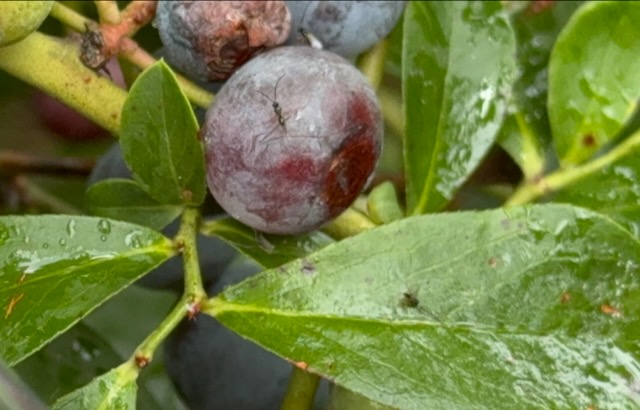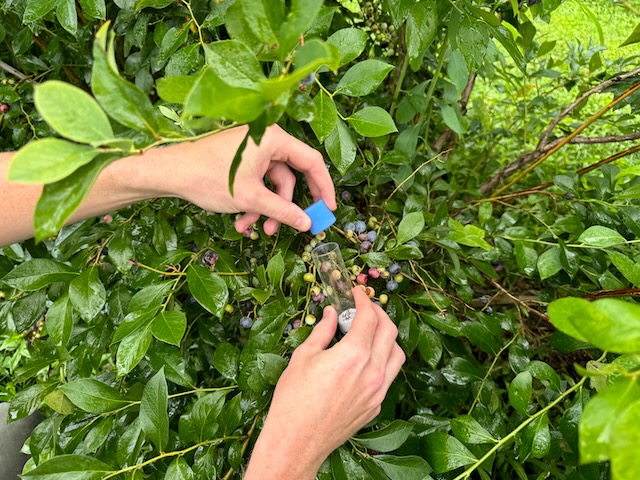Exploring Biocontrols for Spotted Wing Drosophila
go.ncsu.edu/readext?1015398
en Español / em Português
El inglés es el idioma de control de esta página. En la medida en que haya algún conflicto entre la traducción al inglés y la traducción, el inglés prevalece.
Al hacer clic en el enlace de traducción se activa un servicio de traducción gratuito para convertir la página al español. Al igual que con cualquier traducción por Internet, la conversión no es sensible al contexto y puede que no traduzca el texto en su significado original. NC State Extension no garantiza la exactitud del texto traducido. Por favor, tenga en cuenta que algunas aplicaciones y/o servicios pueden no funcionar como se espera cuando se traducen.
Português
Inglês é o idioma de controle desta página. Na medida que haja algum conflito entre o texto original em Inglês e a tradução, o Inglês prevalece.
Ao clicar no link de tradução, um serviço gratuito de tradução será ativado para converter a página para o Português. Como em qualquer tradução pela internet, a conversão não é sensivel ao contexto e pode não ocorrer a tradução para o significado orginal. O serviço de Extensão da Carolina do Norte (NC State Extension) não garante a exatidão do texto traduzido. Por favor, observe que algumas funções ou serviços podem não funcionar como esperado após a tradução.
English
English is the controlling language of this page. To the extent there is any conflict between the English text and the translation, English controls.
Clicking on the translation link activates a free translation service to convert the page to Spanish. As with any Internet translation, the conversion is not context-sensitive and may not translate the text to its original meaning. NC State Extension does not guarantee the accuracy of the translated text. Please note that some applications and/or services may not function as expected when translated.
Collapse ▲The Spotted Wing Drosophila is a major fruit pest that impacts berry farmers across our region, and has spread widely across the U.S. since appearing in the early 2000s. Like most exotic invasive insects, the spotted wing drosophila has few natural enemies, and as such, is very difficult to control. Not only does it feed on a range of edible berry crops, it can also utilize common weed species like pokeweed and wild brambles, allowing it to overwinter and spread in its range.
Farmers need effective solutions for this pest that are efficient to employ, and that are in harmony with ecological systems. Managing any insect pest drives up labor and material costs, and care must be taken to conserve naturally occurring beneficial organisms. In the battle against the spotted wing drosophila, a new control option has emerged – the insect known as Ganaspis brasiliensis, a parasitoid of the dreaded berry pest.

Ganaspis brasiliensis wasps await release. Males can be differentiated from the females by their longer antennae.
Ganaspis brasiliensis seeks out the spotted wing drosophila larvae in order to deposit eggs in the maturing insect pest. Eventually those eggs hatch, killing the drosophila larvae and halting further fruit damage. This species was recently approved by the USDA to determine the efficacy of this natural enemy against the spotted wing drosophila.
The NC State University Beneficial Insects Lab is spearheading this important biocontrol project across North Carolina, in addition to several other projects across the state’s ecoregions. Research stations and an on-farm trail in Buncombe County, are among the release sites for Ganaspis brasiliensis. Insects will be released and then regularly monitored to see if Ganaspis brasiliensis can establish year-round populations, and effectively target the spotted winged drosophila pest. If successful, this project will ensure a sustainable and long-term control tool over multiple growing seasons to allow for a maximum ecological and production win.






